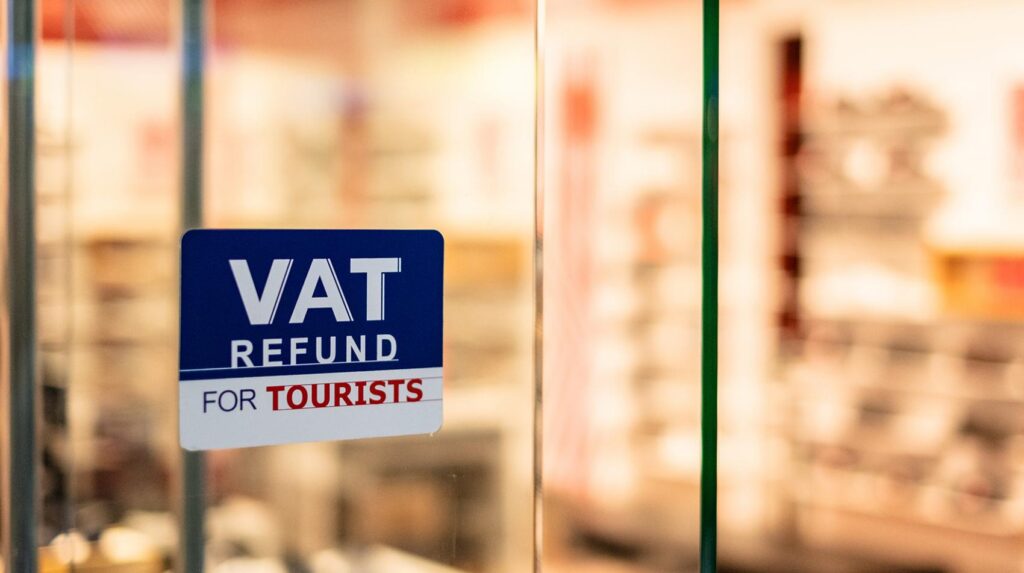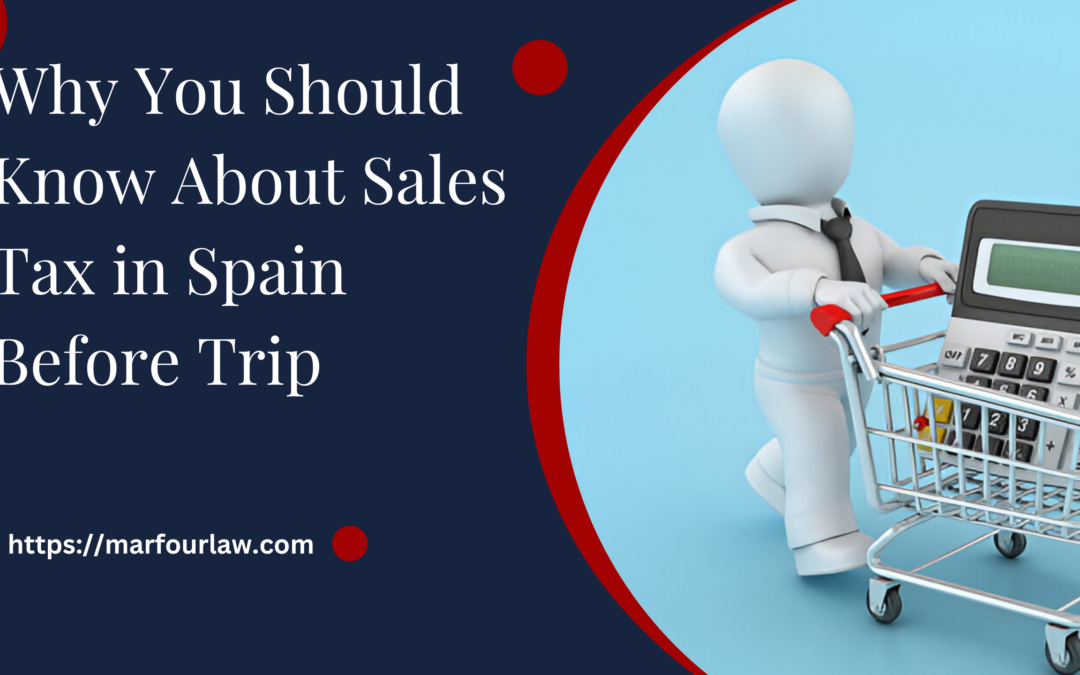If you’re planning a trip to Spain or even thinking of doing business there, understanding Sales Tax in Spain is key. You may have heard about VAT (Value Added Tax), which plays a big role in the country’s tax system. But how exactly does this tax work, and what does it mean for tourists and businesses? Let’s break it down and answer the important questions surrounding sales tax in Spain, especially when it comes to refunds for tourists, rates, and whether Europe, as a whole, has sales tax.
What Is Sales Tax in Spain All About?
Sales tax, or VAT (Value Added Tax), plays a crucial role in Spain’s economy. If you’re buying products or services in Spain, you’re probably paying VAT without even realizing it. But how does it work? Let’s break it down in simple terms.
VAT Basics in Spain
In Spain, VAT is a consumption tax applied to most goods and services. Whether you’re buying clothes, dining at a restaurant, or booking a hotel, you’ll encounter VAT. Think of it as a way the government generates revenue from what people spend. The seller adds this tax to the product or service price, and you, as the buyer, end up covering the cost.
Different VAT Rates
Not all goods and services are taxed equally in Spain. There are different VAT rates depending on what you’re buying:
- Standard rate (21%): This is the most common rate and applies to the majority of products and services.
- Reduced rate (10%): Applied to essential services like transport, food, and some healthcare-related products.
- Super-reduced rate (4%): Used for basic needs, such as certain food items, books, and medicines.
So, the next time you notice a difference in pricing, it might just be due to the different VAT rates in place.
Who Pays VAT?
You do. But it doesn’t stop there. Businesses also play a role. Companies that sell goods or services are responsible for collecting VAT from customers and sending it to the government. In a way, they act like tax collectors on the government’s behalf. If you’re running a business in Spain, this is something you’ll need to manage. Failure to handle VAT properly can lead to hefty fines.
Exemptions from VAT
While most things are subject to VAT, some services and products are exempt. For instance, educational services, medical care, and specific real estate transactions don’t require VAT payments. These exemptions exist to ensure that people aren’t overly taxed on essential services. However, it can get a bit tricky knowing what qualifies, so it’s always good to double-check.
How Does VAT Refund Work for Tourists in Spain?
When you shop in Spain, the price you pay includes Value Added Tax (VAT). For tourists, there’s a perk—you can often get this tax refunded when you take the items back home. VAT in Spain is typically around 21%, which means you could save a good chunk of money, especially on big-ticket purchases like fashion items or electronics.

Eligibility for a VAT Refund
To get a VAT refund, you must live outside the European Union. Tourists from non-EU countries, such as the United States or Canada, are eligible. You also need to spend a minimum amount in a single store on the same day, which is usually around €90. Plus, the goods must leave the EU within three months of purchase, so make sure to keep your travel dates in mind.
Process of Claiming Your Refund
The refund process is straightforward but requires a bit of planning. First, when you make a purchase, ask the store for a tax-free form. Not all stores participate in the VAT refund program, so it’s a good idea to check before buying. Once you have the form, fill it out and keep it safe along with the receipts. Before leaving Spain, take these documents, along with the goods, to a customs office at the airport. Customs will stamp the forms, confirming that you’re taking the items out of the country.
Getting Your Refund
After customs stamps your forms, you can get your money back. Some airports have kiosks where you can claim your refund on the spot. These might offer cash or a refund to your credit card. Alternatively, you can mail the stamped forms to a tax refund company, and they’ll handle it. Keep in mind that refund processing times vary depending on the method you choose.
Things to Remember
To avoid any hiccups, make sure the goods are unused when you present them to customs. Also, give yourself extra time at the airport to complete the process—lines can be long, especially during busy travel seasons. Lastly, the store might charge a small fee for handling the tax-free form, so check with the shop in advance.
Does Europe Have Sales Tax Like Spain?
Yes, most European countries have a form of sales tax similar to Spain’s VAT, but it goes by the same name across Europe—Value Added Tax (VAT). While it serves the same purpose as sales tax in other countries like the U.S., VAT works a bit differently.
How Does VAT Differ from Sales Tax?
In Europe, VAT is included in the price tag of goods and services, so what you see is what you pay. This is unlike sales tax in places like the U.S., where it’s added at the checkout. The rate of VAT varies from country to country, and it can range from around 17% to 25%. For instance, Spain’s standard VAT rate is 21%, while in France it’s 20%, and in Sweden, it’s 25%.
VAT Refunds for Tourists
Just like in Spain, most European countries allow tourists from non-EU countries to claim a VAT refund when they take their purchases home. The rules and minimum spending limits for refunds differ, but the process is fairly similar. The idea is to boost tourism while still keeping the tax system in place for residents. So if you’re traveling across Europe, you can take advantage of VAT refunds in several countries, not just Spain.
VAT Rates Across Europe
While every EU country has VAT, the rate isn’t the same everywhere. For example, Germany
has a lower standard rate of 19%, while Hungary has one of the highest at 27%. Even within countries, there are different rates for various items—essentials like food or medicine might be taxed at a reduced rate.
What Is the Tax Percentage in Spain?
In Spain, the tax percentage you pay varies depending on the type of tax and what it’s applied to. Here’s a breakdown of the main taxes in Spain:
Value Added Tax (VAT)
For most goods and services, Spain’s VAT rate is 21%, which is added to the price you see. However, there are reduced rates for certain items:
- 10% for items like food, hotel services, and transportation.
- 4% for essential goods like bread, milk, books, and medicines.
Income Tax
Income tax rates in Spain are progressive, meaning the more you earn, the higher the percentage you pay. The rates range from 19% to 47% depending on your income:
- 19% for earnings up to €12,450.
- 24% for income between €12,450 and €20,200.
- 30% for income between €20,200 and €35,200.
- 37% for income between €35,200 and €60,000.
- 45% for income over €60,000.
There may be slight differences depending on the region of Spain, as some areas have their own income tax brackets.
Corporate Tax
For businesses, the corporate tax rate in Spain is 25%, although small businesses and startups might benefit from reduced rates during their first few years.
Capital Gains Tax
Capital gains from selling property, stocks, or other investments are taxed between 19% and 26%, depending on the amount of the gain.
In summary, Spain’s tax system covers a range of areas with rates that vary depending on what you’re paying for or earning. The standard VAT of 21% is most common, while income and corporate taxes depend on individual or business earnings.
Are There Any Exemptions for Tourists?
Yes, tourists in Spain can benefit from certain exemptions and refunds, mainly related to VAT. Here’s a detailed look at what you might be eligible for:

VAT Refund for Non-EU Tourists
If you’re visiting Spain and you’re from outside the European Union, you have the opportunity to claim a VAT refund on the goods you buy. This process allows you to get back the VAT (Value Added Tax) that you paid on your purchases. Here’s a detailed breakdown of how it works:
- Minimum Purchase Amount: To qualify for a VAT refund, you need to spend a minimum amount in a single store on the same day. This amount is generally around €90, though it can vary slightly. This rule ensures that the VAT refund process is efficient for larger purchases rather than small, incidental items.
- Obtaining a Tax-Free Form: When you make your purchase, request a tax-free form from the retailer. Not all stores in Spain participate in the VAT refund program, so it’s important to confirm with the store before completing your purchase. This form is crucial because it serves as proof that you are eligible for a refund. Retailers will usually provide you with this form along with your receipt.
- Leaving the EU Within Three Months: The goods you purchase and claim a VAT refund for must be taken out of the European Union within three months of the purchase date. This requirement ensures that the items are genuinely exported rather than used within the EU. Make sure to plan your travel so that you leave the EU within this timeframe.
- Customs Approval: Before you can get your VAT refund, you need to present your tax-free forms, receipts, and purchased items to customs when you’re leaving Spain. This usually happens at the airport. Customs officers will inspect your items and stamp the forms to confirm that the goods are being exported. This stamp is essential for processing your refund.
- Refund Processing: After getting customs approval, you can claim your refund. Some airports have VAT refund kiosks where you can get your refund immediately, either in cash or credited to your credit card. If this service isn’t available, you can mail your stamped forms to a tax refund company, which will then process the refund for you. The processing time can vary, so keep that in mind when planning your departure.
Exemptions from VAT for Specific Purchases
While the VAT refund process is a significant benefit for tourists, there are certain specific exemptions and reduced rates within Spain that mainly apply to residents rather than tourists. For instance:
- Educational Goods: Items related to education, such as textbooks and educational materials, might be exempt from VAT or taxed at a reduced rate. This exemption is intended to make educational resources more affordable for residents and institutions.
- Medical Goods: Certain medical supplies and medications are often subject to lower VAT rates or exemptions. This helps make essential healthcare products more affordable for residents who need them.
These exemptions generally don’t apply directly to tourists, as they are more geared toward making life easier for residents and ensuring that essential goods and services are accessible.
Exemptions for Certain Services
Some services in Spain might not charge VAT to tourists, although this is less common and often more complex:
- Special Services: Certain types of services, especially those related to healthcare or education, might not charge VAT. However, these services are typically more relevant to residents or specific institutions rather than tourists.
- Complex Situations: The application of VAT to services can be complex and varies depending on the nature of the service. For tourists, understanding whether a specific service is exempt can be challenging, and it often requires clarification from the service provider.
If you need detailed legal advice on VAT and sales tax issues in Spain, including guidance on how to manage VAT refunds and comply with local tax regulations, Marfour International Law Firm is a trusted resource. They specialize in international tax law and can offer expert assistance tailored to your specific needs, ensuring that you navigate Spain’s VAT system effectively. For professional support and detailed inquiries, consider reaching out to Marfour International Law Firm to get precise and actionable insights.
FAQs
Can tourists get a VAT refund in Spain?
Yes, tourists from outside the EU can claim a VAT refund on purchases made in Spain. To qualify, you need to spend over a specific amount and obtain a tax-free form from the retailer. When leaving Spain, present this form and your receipts to customs to process your refund.
What is the VAT rate in Spain?
Spain has a standard VAT rate of 21%. However, some items, like essential goods and services, are taxed at reduced rates of 10% or 4%.
Does Europe have sales tax?
European countries, including Spain, generally use VAT instead of a traditional sales tax. VAT is applied at each stage of production and is included in the displayed price of goods and services.
Is VAT included in prices in Spain?
Yes, in Spain, VAT is included in the price you see on the shelf or menu. There are no additional taxes added at checkout, making it simpler to see what you’re paying for.
How can businesses handle VAT in Spain?
Businesses in Spain charge VAT on their sales and can reclaim VAT on their purchases. The difference between the VAT collected on sales and VAT paid on purchases is what the business reports to the tax authorities.
Conclusion
Understanding Sales Tax in Spain, which is essentially VAT, can significantly impact your shopping experience, especially if you’re visiting as a tourist. Knowing the VAT rates, how refunds work, and how VAT compares to sales tax in other regions can help you make informed decisions and possibly save money. Whether you’re a tourist looking to get a refund on your purchases or a business navigating VAT responsibilities, this knowledge is essential. With this guide, you’re now better prepared to handle VAT-related aspects of your time in Spain, ensuring a smoother and more economical experience.

